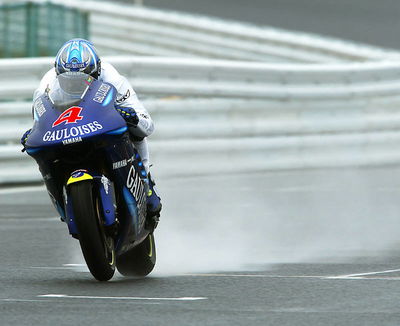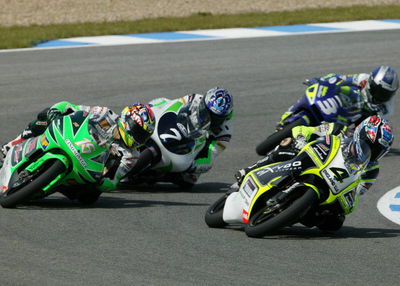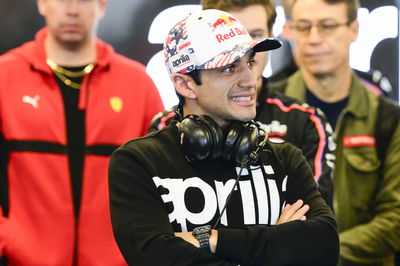FIM announce end to neutralisation.
Over the Jerez weekend it was announced that, following a request from the MotoGP riders, the 'neutralisation' procedure announced before the start of the season for use in rain-interrupted races has been scrapped.
Previously, the race would be stopped and riders would return to the pits to change tyres, before a shortened race restart and an aggregate result. This proved unpopular because the winner on the racetrack was often not the aggregate winner and it caused overrunning of TV schedules.

Over the Jerez weekend it was announced that, following a request from the MotoGP riders, the 'neutralisation' procedure announced before the start of the season for use in rain-interrupted races has been scrapped.
Previously, the race would be stopped and riders would return to the pits to change tyres, before a shortened race restart and an aggregate result. This proved unpopular because the winner on the racetrack was often not the aggregate winner and it caused overrunning of TV schedules.
The 'neutralisation' rule was designed to solve this and meant a safety car period, followed by a pit-stop window [while the riders changed tyres] and then a rolling restart, from behind the safety car.
Although it had never been used, a 'dry run' was carried out at the Catalunya pre-season test and caused more than a little confusion, with riders struggling to keep the correct distance between those around them as they tried to keep their tyres warm behind the 'slow' safety car.
"The new safety car regulation is quite complicated and in racing we need as few complications as possible," said Max Biaggi at the time. "I'm not sure how it will work in a race situation - rain, cold tyres, riders all together in a group?"
Due to such safety concerns, in the event of a dry/wet Grand Prix, the race will now be stopped as before and then re-started as soon as possible, with two warm-up laps.
The exact wording of the new rules can be seen below:
1.25 Interruption of a race
1.25.3 If three laps or more have been completed by the leader of the race and all other riders on the same lap as the leader, but less than two-thirds of the original race distance, rounded down to the nearest whole number of laps, then the race will be restarted according to Art. 1.26. If it is found impossible to restart the race, then the results will count and half points will be awarded in the Championship.
1.25.4 If the results calculated show that two-thirds of the original race distance rounded down to the nearest whole number of laps have been completed by the leader of the race and by all other riders on the same lap as the leader, then for the 125cc and 250cc classes the race will be deemed to have been completed and full Championship points will be awarded. For the MotoGP class, the race will be restarted for a minimum of 3 laps according to Art. 1.26. If it is found impossible to restart the race, then the results will count and full Championship points will be awarded.
1.26 Re-starting a race that has been interrupted
1.26.3 The start procedure will be identical to a normal start with sighting lap(s), warm-up lap (two warm-up laps for the MotoGP class), etc.
1.26.4.ii. In the case of the situation described in 1.25.3 and 1.25.4 above:...c) The number of laps of the second race will be the number of laps required to complete the original race distance, with a minimum of 3 laps... e) The final race classification will be established according to the position and the consolidated number of laps of each rider at the time he crossed the finish line at the end of the last part of the race. Provisions of Art. 1.23.4 will apply.
- Art. 1.27 (neutralisation of a MotoGP race) and 1.28 (resuming a MotoGP race that has been neutralised) are deleted.












